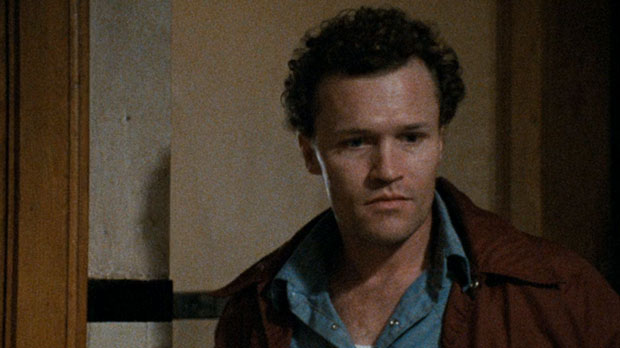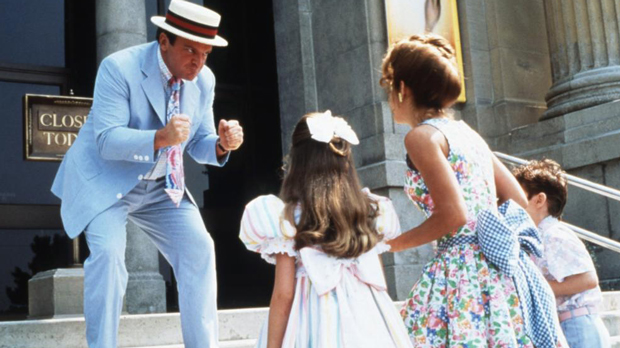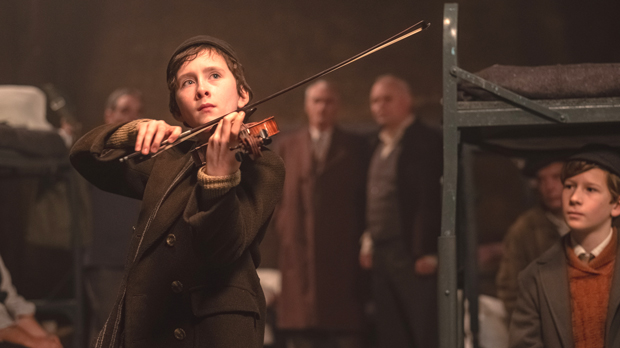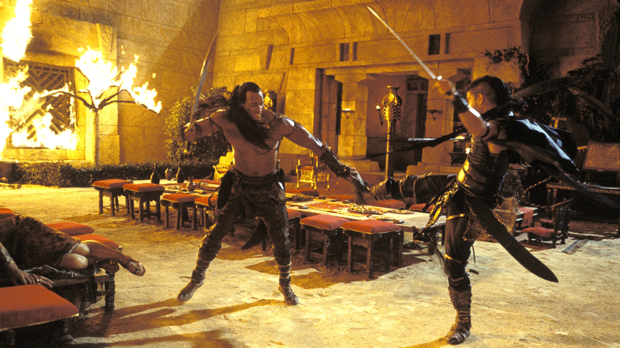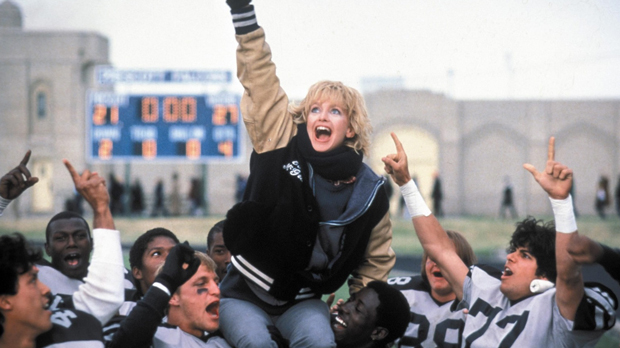 Henry: Portrait of a Serial Killer (1986) Greycat Films/Horror-Thriller RT: 83 minutes No MPAA rating (graphic disturbing violence and images, rape, language, nudity, some sexual content, drugs) Director: John McNaughton Screenplay: Richard Fire and John McNaughton Music: Ken Hale, Steven A. Jones and Robert McNaughton Cinematography: Charlie Lieberman Release date: June 22, 1990 (Philadelphia, PA) Cast: Michael Rooker, Tom Towles, Tracy Arnold. Box Office: $609,000 (US)
Henry: Portrait of a Serial Killer (1986) Greycat Films/Horror-Thriller RT: 83 minutes No MPAA rating (graphic disturbing violence and images, rape, language, nudity, some sexual content, drugs) Director: John McNaughton Screenplay: Richard Fire and John McNaughton Music: Ken Hale, Steven A. Jones and Robert McNaughton Cinematography: Charlie Lieberman Release date: June 22, 1990 (Philadelphia, PA) Cast: Michael Rooker, Tom Towles, Tracy Arnold. Box Office: $609,000 (US)
Rating: ****
Henry: Portrait of a Serial Killer is one of the three films released in 1990, the others being The Cook, the Thief, His Wife and Her Lover and Tie Me Up! Tie Me Down!, that brought about the NC-17 rating. Although it premiered at the Chicago Film Festival, director John McNaughton (Normal Life) couldn’t find a distributor because the MPAA rated it X which meant that most theater chains wouldn’t show it because of the rating’s association with pornography. After a nearly four-year battle, he finally released it sans rating with a “No One Under 17 Admitted” policy. Later that year, NC-17 went into effect.
Now here’s the funny thing. It was released here in Philadelphia the same weekend as RoboCop 2, a major studio movie where a violent act occurs every few minutes and one of the villains is a 12YO drug lord with a foul mouth. It’s extremely dark and violent yet it had no problem getting an R. On the other hand, there’s not a lot of graphic violence in Henry: Portrait of a Serial Killer. Most of it occurs off-screen yet it got slapped with an X. Why? The MPAA’s issue was with the tone of the movie. It’s a serious handling of a subject too often treated lightly by slasher movies featuring colorful killers dispensing humorous one-liners as they dispense dopey teens. Henry: Portrait of a Serial Killer is steeped in realism. Henry is a cold, soulless murderer who kills without remorse. He’s a human being without humanity. It’s a very disturbing film. If any film deserves an adults-only rating, this is it.
Made on a budget of $125,000 and filmed on the streets of Chicago, Henry: Portrait of a Serial Killer is loosely inspired by the confessions of real-life serial killer Henry Lee Lucas. Michael Rooker (Sea of Love) plays the title character, a drifter recently released from prison after doing time for murdering his mother. He spends most of his time stalking and killing strangers. He lives in a shabby apartment with his friend/roommate Otis (Towles, Night of the Living Dead), a childish, ignorant, feeble-minded pervert who deals pot to high school kids. The dynamics of the relationship change when Otis’ younger sister Becky (Arnold, The Borrower), escaping from an abusive marriage, moves in. She becomes romantically interested in Henry who, most likely, is incapable of being in such a relationship.
Otis gets involved in Henry’s “activities” after seeing him kill a couple of prostitutes up close. Henry starts teaching him the tricks of the trade like not killing people he knows and not killing the same way twice. One of the movie’s most disturbing scenes shows Henry and Otis watching a videotape of themselves killing a family. I mention this scene specifically because it’s the one that seems to bother most viewers.
I went to see Henry: Portrait of a Serial Killer on opening weekend at the Roxy, a small specialty theater that normally didn’t attract the size crowd that showed up that Saturday night. They were obviously drawn by the controversy surrounding the movie. I decided to have a little fun and count the walk-outs. Ten people, including the friend that accompanied me, left before it was over. To this day, I still can’t believe I brought him to this movie. What was I thinking?
Henry: Portrait of a Serial Killer brings to mind the gritty, right-in-the-gutter feel of an Abel Ferrara (Ms. 45) film. It was shot on 16mm film in less than a month in late ’85. Because of the low budget, McNaughton had no money to hire extras so he just filmed people on the street going about their business. The use of natural locations and real people (as opposed to hired extras) adds to its realistic feel. It’s a very unforgiving film. McNaughton sets out to provoke, to disturb and to frighten. He succeeds. It’s one of the most unsettling movies I’ve ever seen.
Rooker is phenomenal in the lead role. He plays Henry as evil incarnate, never once camping it up for the benefit of viewers looking for the next Freddy or Jason. His emotionless is positively chilling as is his unreliability as the teller of his own narrative. It’s clear he killed his mother and feels nothing about it; however, he can’t seem to keep his facts straight. One minute, he stabbed her; the next, he shot her. Which version is the truth? For that matter, is anything he says true? Since he’s incapable of empathy or remorse, it’s highly likely that he has no problem lying to people. He’s one scary guy.
Towles is also great as the kind of guy that makes your skin crawl. He’s a pervert, plain and simple. He makes a pass at a high school jock that gets into his car to make a drug deal. It’s implied he might be gay for Henry. He also has a sick, twisted thing for his own sister. He’s a real creep. Arnold does good work as a damaged girl whose daddy issues keep drawing her to violent, abusive men. This explains why she takes a liking to Henry.
In a world where death is trivialized by slasher movies, Henry: Portrait of a Serial Killer stands out due to its uncompromising look at the psychology of a real serial killer, one that doesn’t wear a hockey mask or crack jokes. It’s also notable for telling its story from the killer’s point of view. Not once do we see the police. There are no news reports of an investigation into the slew of deaths. No cops show up asking questions. Instead, McNaughton focuses on Henry and his twisted mind. He pulls no punches in depicting the coldness with which Henry goes about his daily life. Killing is a part of that life. It’s a part of Henry. Killing is to Henry what breathing is to some people. It’s what he does and that’s that. It’s scary to know that people like Henry exist in the real world. Henry: Portrait of a Serial Killer might just be the most effective horror movie ever made.
